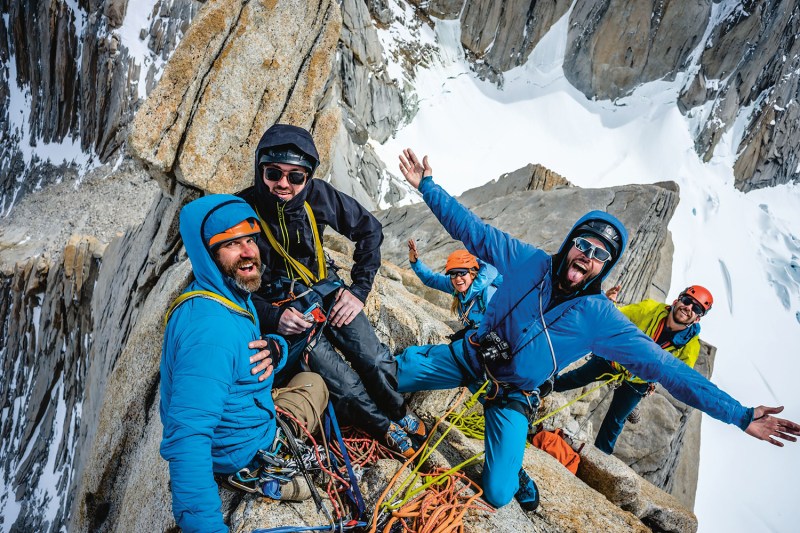
As the fashion world makes its slow but steady shift toward sustainability, industry leader Patagonia is marking a milestone of its own: The end of a 26-year journey toward making one of its most popular products 100% sustainable.
Back in 1993, Patagonia debuted its flagship recycled product: a fleece jacket made from recycled soda bottles. It was revolutionary at the time — the Los Angeles Times referred to the fleece as a “miracle fabric.”
True to form, though, Patagonia wasn’t content to rest on its accomplishment with a token sustainable product. The company’s nature-loving ethos drove it to pursue the same earth-friendly goal with other items in its product line. That’s what makes this month such a watershed moment for the company. As of today, 100% of Patagonia’s waterproof shells (all 61 of them) are constructed from recycled materials and sewn in Fair Trade Certified factories. From Alpine and Snow to Lifestyle and Kids, every style in the Patagonia catalog represents a groundbreaking level of sustainability — not just on the outdoor apparel scene, but for the entire fashion industry. No wonder the company is calling the new line Shell, Yeah!
Each Patagonia recycled shell jacket starts with a chip made of recycled plastic, drained of petroleum and other harmful or unnecessary chemicals until it’s broken down to a fiber. That fiber is spun into a “yarn,” which is then woven into material, cut into a garment, and sewn. It’s a slow and admittedly expensive process, which is why so many other environmentally friendly brands haven’t yet taken the leap that would, frankly, legitimize all their branding efforts.
But Patagonia has put their money where its mouth is, and created a reliable, streamlined supply chain that facilitated this major transformation of its collection. And this big move comes at a crucial moment for the planet’s health. With 8.3 billion tons of plastic waste at large in the world, and only 9% of it currently being recycled, our global society absolutely requires big moves like this one from Patagonia if it’s going to survive. Not only does the Shell Yeah! line make use of existing plastic, but it also slashes the carbon emissions of Patagonia’s supply chain. Creating virgin synthetic fibers accounts for 86% of those emissions, which means that the more recycled fabrics get made and used, the closer we’ll come to carbon neutrality. Patagonia is committed to crossing the carbon-neutral line across its entire business by 2025. We can’t wait to bring you news about that.
Some of our favorites from the recycled Shell Yeah! collection:
Patagonia Men’s Frozen Range 3-in-1 Parka

Patagonia’s most pinnacle parka to date is also the brand’s warmest. Designed for tough, frigid winters, this 3-in-1 parka was built with interior baffled construction to deliver core warmth. The shell is a soft and supple 2-layer GORE-TEX exterior to keep you dry and protected.
Patagonia Men’s Ascensionist Jacket

For swift mountain pursuits when every gram counts, Patagonia’s lightest weight shell offers comfortable, reliable protection in a breathable, highly packable shell. Ideal for light-and-fast alpinism or high-output ski touring, the Ascensionist provides the refuge you need at just 13.1 oz.
Patagonia Men’s Untracked Jacket

An update of a Patagonia classic, the Untracked Jacket has a soft, supple, three-layer, 92% recycled nylon Gore-Tex stretch fabric for unsurpassed windproof and waterproof/breathable performance, a fully dialed yet refined silhouette, and a flannel backer for extra warmth and comfort.
Want to learn more about the Shell Yeah! collection and Patagonia’s commitment to cutting down on plastic? Watch the mail for the latest issue of The Cleanest Line, Patagonia’s newsy gear catalog, which is dedicated in its entirety to recycling.


